The sand cat, also called the sand dune cat, is one of the world’s smallest wild cats. It can be found in the deserts of northern Africa, Southwest and Central Asia.
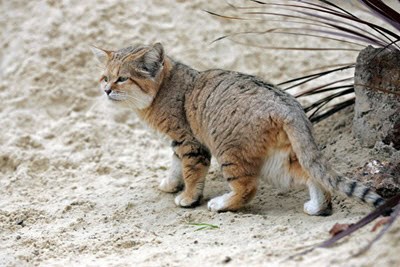
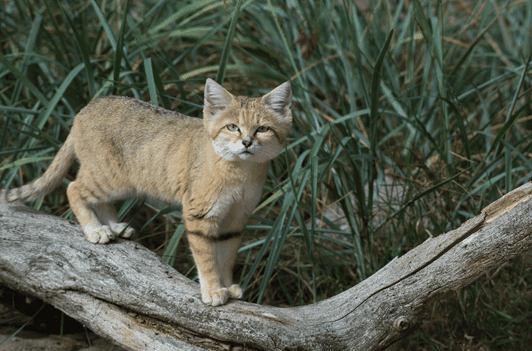
Scientific Name: Felis margarita
Conservation Status: Near Threatened
Subspecies:
- F. m. margarita (North Africa)
- F. m. thinobia (West and Central Africa)
Lineage – The sand cat belongs to the Domestic Cat lineage, which includes the Jungle cat, black-footed cat, African wildcat, Chinese mountain cat, European wildcat and domestic cat.
Interesting sand cat facts
-
- The sand cat is one of the smallest wild cats.
- The visible part of the cat’s ear is extremely large, which helps protect the ear from the sand.
- Sand cats are exceptional diggers
- Their scientific name was proposed in 1858.
- They have extremely good hearing – better than the domestic cat.
- It’s markings can vary from cat to cat. Some have no markings, others have both spots and stripes.
- They can get the water they need from their prey.
More about the sand cat
Sand cats have adapted to the desert environment, including sandy and rocky deserts. They are considered non-aggressive and even docile, which has made them a target for illegal pet traders.
The cats can live quite far from water and tolerate extremely hot and cold weather. They are considered a rare species.
Sand cat history
The sand cat is a domestic cat (Felis) lineage member. The common ancestor of all members of the Felis lineage lived between 4 and 2 million years ago. The jungle cat was the first species that evolved from this ancestor, followed by the black-footed cat and the sand cat. It is believed the sand cat migrated to Africa during periods when the sea level was low.
Physical characteristics
As their name suggests, the sand cat’s fur is pale sand. It is a small, stocky cat with short legs. At the top of its legs, it often has two dark brown rings that circle entirely around it. The sand cat also has thick fur covering the underside of its paws to protect it from extreme temperature shifts. It has a darkish streak that runs down its face from the eye to the cheek. Its ears are tipped in black, and it has a blackish nose. The sand cat also has yellow-green eyes ringed in white, a reddish-looking streak that runs from the corner of the eye across each cheek, and white whiskers that can grow as long as three inches.
The North African F. m. margarita (the Saharan sand cat) is smaller than the F. m. thinobia. Its fur is a brighter yellow with more visible markings and 2 to 4 rings on the tail.
The F. m. thinobia, also known as the Arabian sand cat, Turkestan sand cat and Pakistan sand cat, has greyish fur, less obvious markings and only 2 to 3 rings on its tail.
| Sand Cat | FROM | TO |
| Weight | 3.3 lbs. | 5.5 lbs. |
| Length | 16 in. | 21 in. |
| Tail | 5.1 in. | 5.9 in. |
Behavior
Like most felines, the sand cat is a solitary animal that communicates with others only by scent trails and claw marks. It runs quickly with its belly to the ground and crosses great distances, 3 to 6 miles in one night.
Hunting and prey (diet)
The sand cat will usually remain hidden during the day, either in a burrow or under rocks and shrubs, and hunt at night. The sand cat’s preferred prey are rodents and hares, but the cats will also hunt small birds, lizards, insects, gerbils, sand voles, and hares. Sand cats will live in areas with enough vegetation for their prey. They can even dig out prey that has buried itself. Sand cats can live far away from water. They will satisfy their moisture needs from their prey (similar to the black-footed cat) but do drink if water is readily available.
Reproduction and lifespan
The female gestation period for a sand cat is 59 to 66 days, and the average litter size is between 3 and 5 kittens. Although they may have 2 litters per year (usually in captivity), it is more common to have only one. When seeking a mate, the sand cat will make loud, high-pitched barking sounds. The reproduction cycle for cats in the Sahara
The breeding period for cats in Pakistan usually begins in January and ends in April. However, the breeding period lasts only two months, from September to October. Most young sand cats are on their own by age eight, but it has been noted that they can live up to 13 years in captivity. However, due to the maternal neglect of first-time mothers, only 40% of the cats in captivity lived to day 30 months old.
The life span of Sand Cats in the wild has not been documented, but it has been noted that they can live up to 13 years in captivity. However, due to the maternal neglect of first-time mothers, only 40% of the cats in captivity lived to day 30.
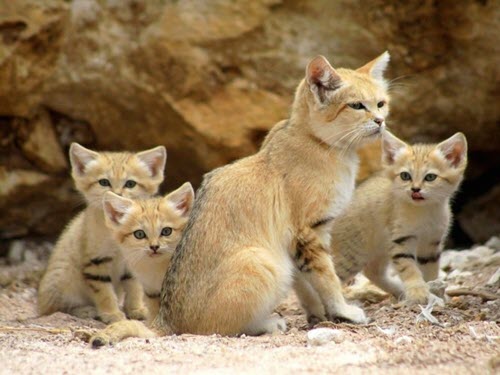
Conservation issues
Habitat degradation is one of the biggest threats to the sand cat and the loss of prey. They are also often killed in fox or jackal traps and captured for the illegal pet trade. It is illegal to hunt the sand cat in several countries, including Israel, Iran, Niger, Tunisia, Pakistan, Mauritania, Niger and Algeria.
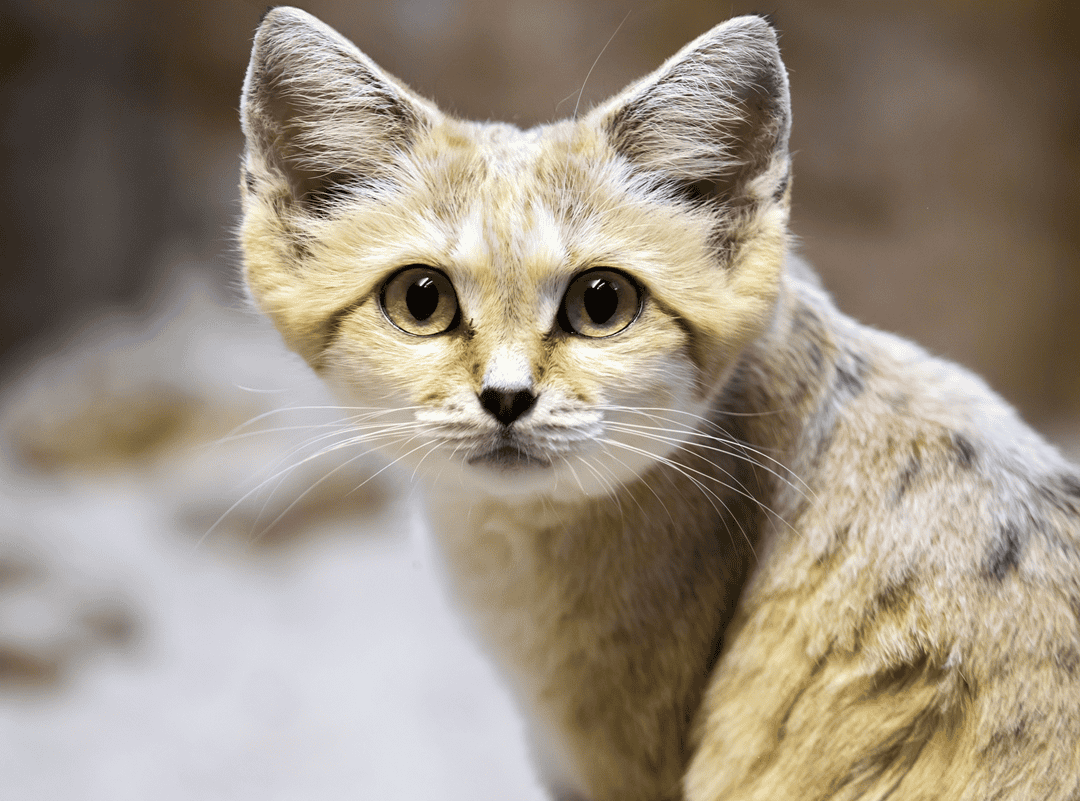
Sand cat research and quotes
“The sand cat Felis margarita is one of the least-well known of all cat species. It has a wide but patchy distribution in North Africa, the Arabian Peninsula, Iran, Central Asia and Pakistan…Sand cats are well adapted to a desert environment and a psammophilic, or sand-dwelling, lifestyle…They can apparently exist without drinking, obtaining sufficient water from their prey, which allows them to live far from water sources (Nowell and Jackson, 1996).” – 2014 Arabian Sand Cat Status Review and Conservation Strategy | Banfield, Al Qahtani, et. al.
Def. “psammophile” – a plant or animal that prefers or thrives in sandy areas.

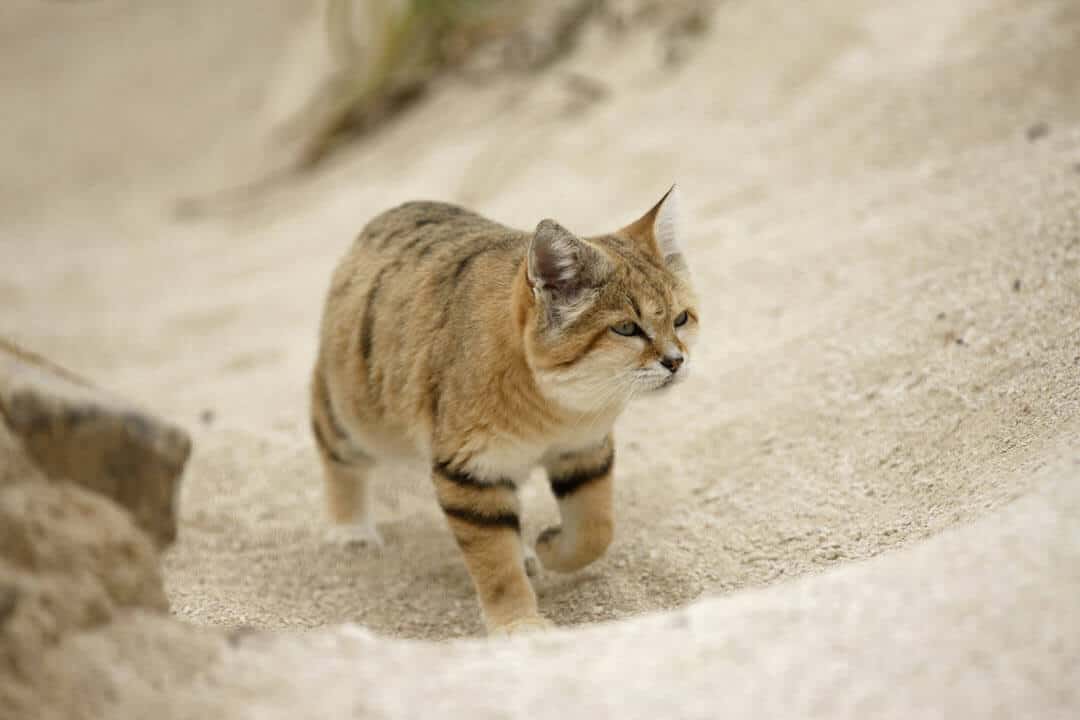











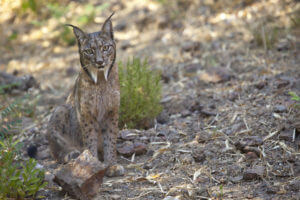




0 Comments